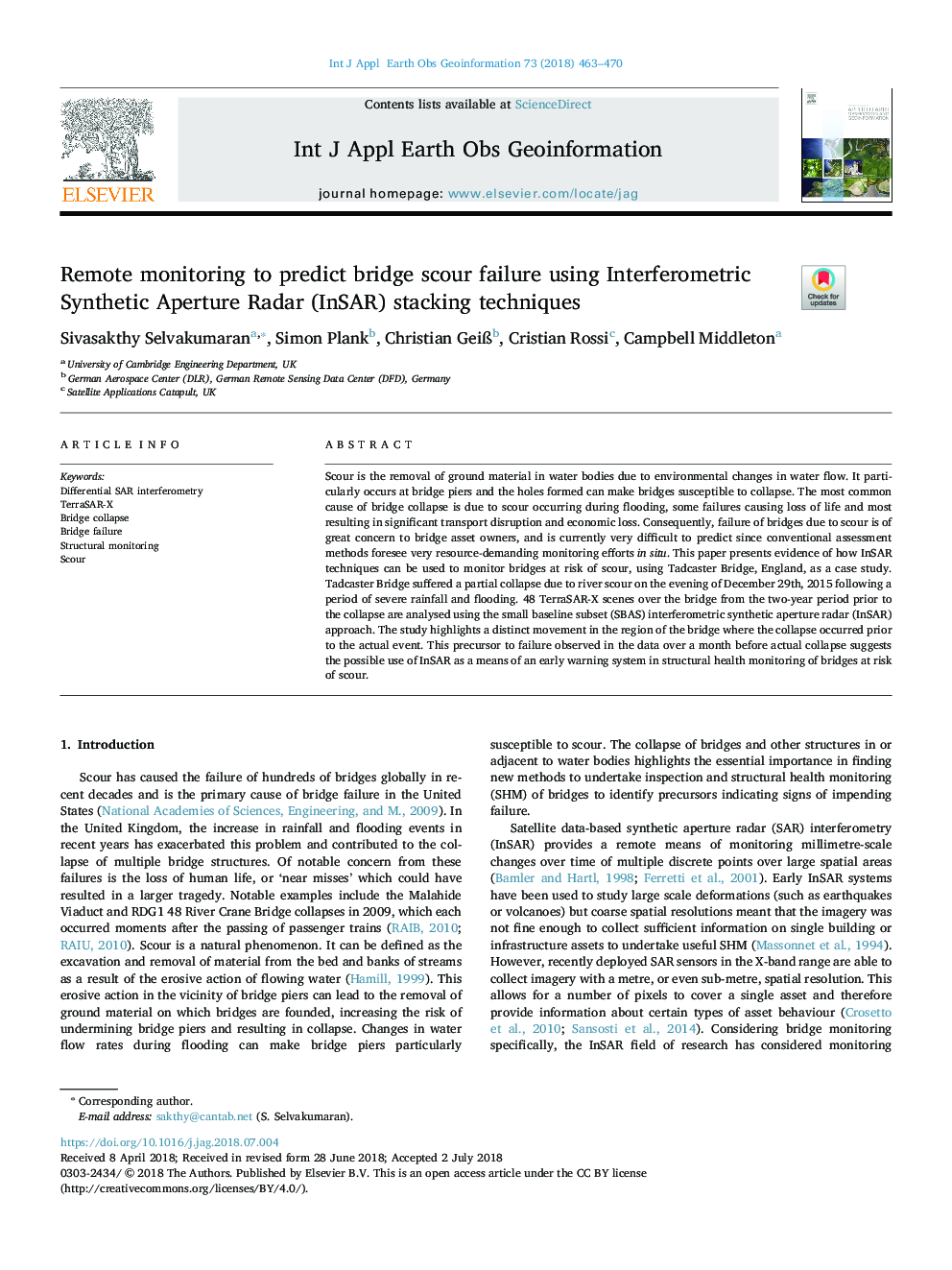| Article ID | Journal | Published Year | Pages | File Type |
|---|---|---|---|---|
| 8867820 | International Journal of Applied Earth Observation and Geoinformation | 2018 | 8 Pages |
Abstract
Scour is the removal of ground material in water bodies due to environmental changes in water flow. It particularly occurs at bridge piers and the holes formed can make bridges susceptible to collapse. The most common cause of bridge collapse is due to scour occurring during flooding, some failures causing loss of life and most resulting in significant transport disruption and economic loss. Consequently, failure of bridges due to scour is of great concern to bridge asset owners, and is currently very difficult to predict since conventional assessment methods foresee very resource-demanding monitoring efforts in situ. This paper presents evidence of how InSAR techniques can be used to monitor bridges at risk of scour, using Tadcaster Bridge, England, as a case study. Tadcaster Bridge suffered a partial collapse due to river scour on the evening of December 29th, 2015 following a period of severe rainfall and flooding. 48 TerraSAR-X scenes over the bridge from the two-year period prior to the collapse are analysed using the small baseline subset (SBAS) interferometric synthetic aperture radar (InSAR) approach. The study highlights a distinct movement in the region of the bridge where the collapse occurred prior to the actual event. This precursor to failure observed in the data over a month before actual collapse suggests the possible use of InSAR as a means of an early warning system in structural health monitoring of bridges at risk of scour.
Related Topics
Physical Sciences and Engineering
Earth and Planetary Sciences
Computers in Earth Sciences
Authors
Sivasakthy Selvakumaran, Simon Plank, Christian GeiÃ, Cristian Rossi, Campbell Middleton,
